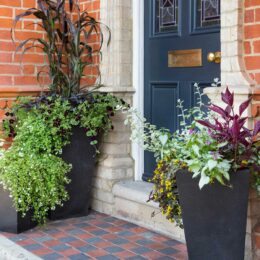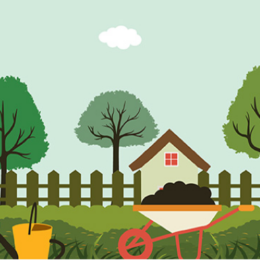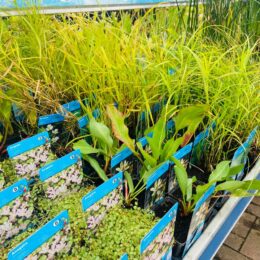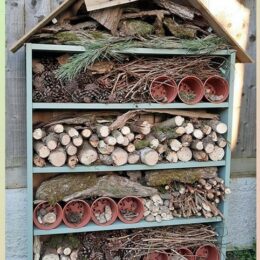Brightening those gloomy areas
Summer bedding plants are finally coming to an end, and now is a good time to replant your tubs and baskets with some autumn combinations, which will provide interest right through to spring.
Our pick of planting combinations
1.Typical container shrubs include Aucuba, Choisya, Leucothoe, small conifers and Skimmias, to provide height and structure. Next spring they can be planted in the garden as they grow bigger or left in the tubs for all round interest, so they offer real value for money.
2. Woody herbs such as Thyme or Rosemary can also work well in tubs, and are great for placing next to your paths and doors; releasing heady scents as you pass by. You can also create feature pots planting standard Baytree or Holly, surrounding them with colourful bedding. They also give you somewhere to hang your Christmas lights later in the year.
3. As regards bedding an enduring favourite is the winter flowering pansy, which provide colour from now until next Spring/Summer, if dead-headed regularly. They will happily sit under snow and frost, and perk up again once the weather thaws out. You can also mix with bedding which will flower in the Spring, such as Bella Daisies, Primulas and Wallflowers.
4. Cyclamen and Ornamental Cabbage add pink, purple, red and white to the mix.
5. You can even plant your winter vegetables in pots, including brassicas and the colourful rainbow chard.
Preparation
- Once you’ve chosen your plants you need to prepare the containers. To protect from frost you can line plastic and fibreglass containers with bubble wrap. Most terracotta pots are frost resistant these days. You should also line wooden containers with plastic to avoid rot.
- Good drainage is important because water logged pots are more likely to be damaged as the water freezes and expands. To avoid this put them pot feet and add terracotta or polystyrene ‘crocks’ to the inside of the container before you add the soil, encouraging water to drain away.
- It’s best to use fresh soil, to offer fresh nutrients and avoid disease.
- Plant up containers where you are going to position them, to avoid lifting heavy pots, or place on ‘plant movers’ for easy manoeuvring.
- You can put your plants fairly close together as they do not grow that quickly during the colder, shorter days. Once planted there is very little care needed, apart from dead-heading and watering.
- Water well in first few weeks of planting, and even if it rains heavily check soil wetness regularly, as often the plants can prevent rain from really soaking the soil.








